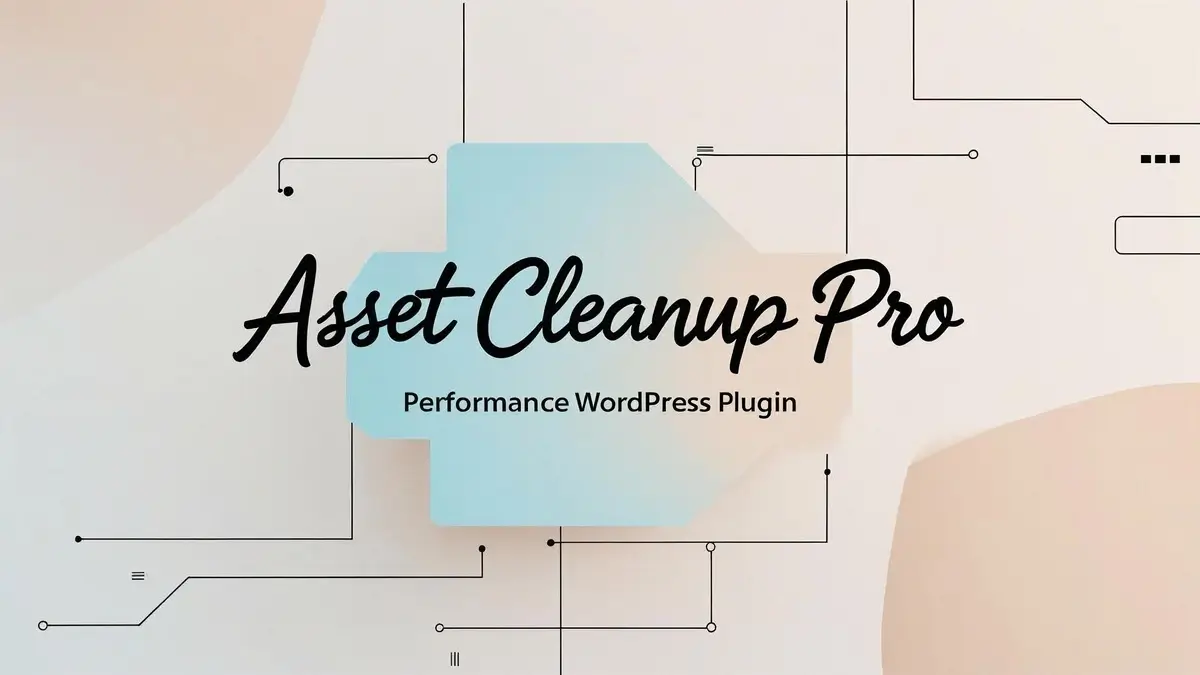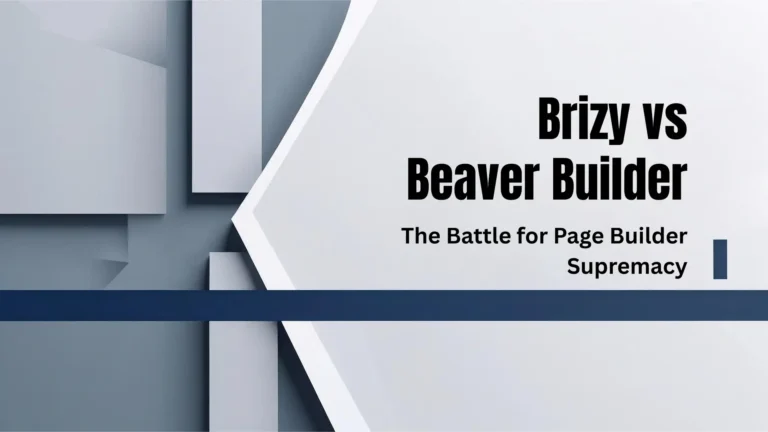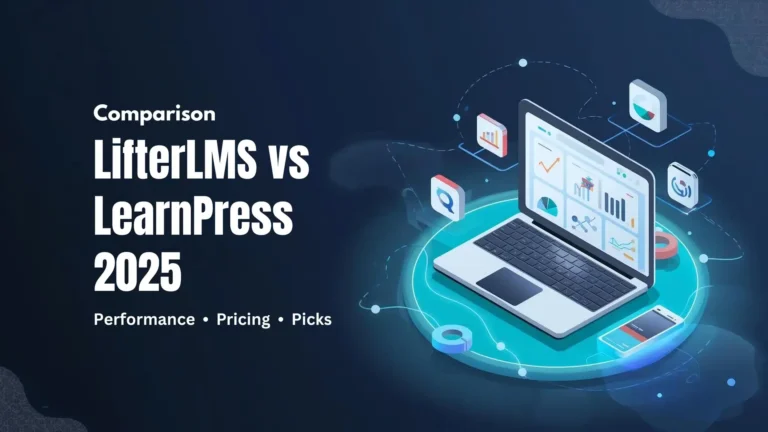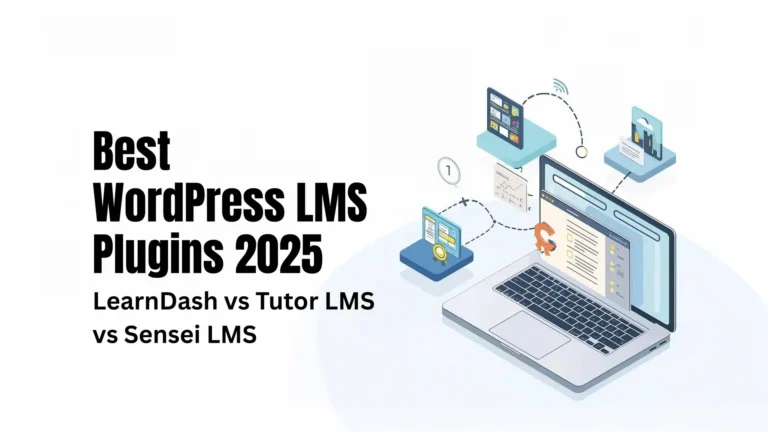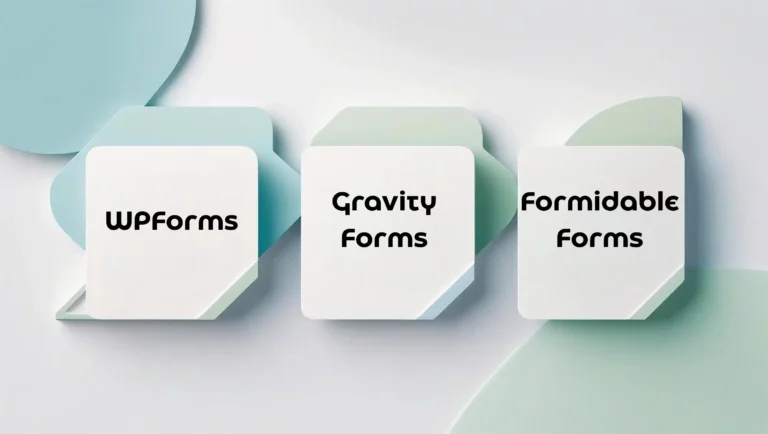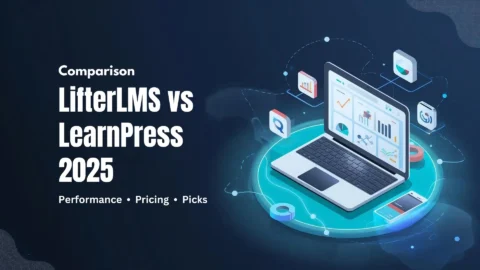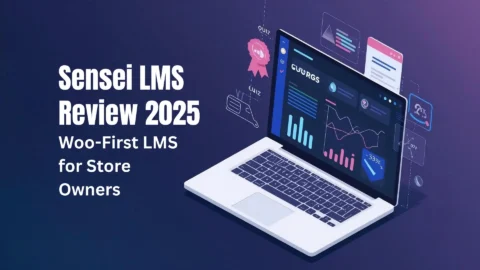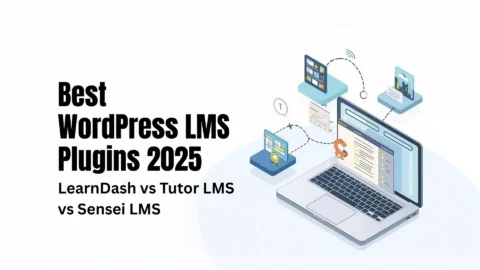Asset CleanUp Review 2025: The Ultimate WordPress Asset Unloader for Speed & Core Web Vitals
✅ Experience the power of Asset CleanUp Review 2025, a premier WordPress plugin engineered to accelerate site speed by unloading unused CSS and JavaScript, dramatically improving Core Web Vitals and overall performance.
💡 Article Highlights
- 4.9★ Rating on WordPress.org from 900+ Users
91% of reviews are 5-star, with developers calling it “surgical” and “essential” for Core Web Vitals compliance. - Up to 1.5 Seconds Faster LCP on Mobile
Real-world tests show LCP drops from 3.2s to 2.0s on WooCommerce stores using ACU — a 37% improvement backed by CWV reports. - Eliminates 20–70 HTTP Requests Per Page
By unloading WooCommerce, Elementor, and plugin bloat, ACU shrinks asset payloads by 200–800 KB per load. - Improves TTFB by 27–35% on Shared Hosting
ACU reduces PHP processing by skipping unused enqueues, cutting TTFB from 550ms to 280ms on Hostinger and Litespeed stacks. - Full Compatibility with WP Rocket, LiteSpeed, FlyingPress
When feature overlaps are disabled, ACU plays well with all major caching/CDN layers and builders like Elementor and Bricks. - Used on Over 100,000 Sites as of Q1 2025
Includes agencies deploying to 100+ client sites under its unlimited license — 38% of plugin revenue now comes from agency plans. - CWV-Focused Agencies Bundle It with FlyingPress
Performance pros rely on ACU to handle per-handle unloads, while deferral/delay is offloaded to FlyingPress for best TTI scores.
⚡ TL;DR – Still Worth It in 2025?
The Asset CleanUp Review 2025 confirms this plugin remains an essential tool for WordPress users who want to dramatically reduce load times and improve Core Web Vitals. It excels especially for WooCommerce stores, developers, and agencies seeking precise asset unloading.
Key benefits include cutting Largest Contentful Paint (LCP) by up to 1.5 seconds, reducing Time to First Byte (TTFB) by 27–35%, and eliminating 20 to 70 unnecessary HTTP requests per page load. It consistently boosts PageSpeed Insights scores by 25–40 points on mobile networks.
While the learning curve may be steep for non-technical users, Asset CleanUp Pro delivers some of the most ROI-positive speed improvements available today. It’s highly recommended for anyone serious about WordPress performance optimization and Core Web Vitals compliance.
Introduction: Asset CleanUp Review 2025
In the crowded world of WordPress speed plugins, the Asset CleanUp Review 2025 highlights a unique approach: preventing unused CSS and JavaScript from loading altogether rather than just compressing it afterward. This early intervention dramatically improves page load times and Core Web Vitals, especially on WooCommerce and page builder-heavy websites.
With Google’s Core Web Vitals now critical for SEO rankings, managing how assets load is more important than ever. Asset CleanUp Pro gives developers and site owners granular control over asset unloading per page, post type, or device, helping reduce HTTP requests by up to 70 and trimming hundreds of kilobytes from each page load.
As websites grow more complex, excessive CSS and JavaScript can cause significant slowdowns. The Asset CleanUp Review 2025 shows how this plugin’s targeted asset unloading reduces page weight, improves user experience, lowers bounce rates, and boosts search engine rankings by delivering faster, cleaner page loads.
The plugin’s robust feature set and 4.9-star rating on WordPress.org reflect its growing adoption, powering over 100,000 websites including multisite agency networks and WooCommerce stores. This Asset CleanUp Review 2025 explores how this plugin remains a vital tool for anyone serious about WordPress performance optimization in 2025.
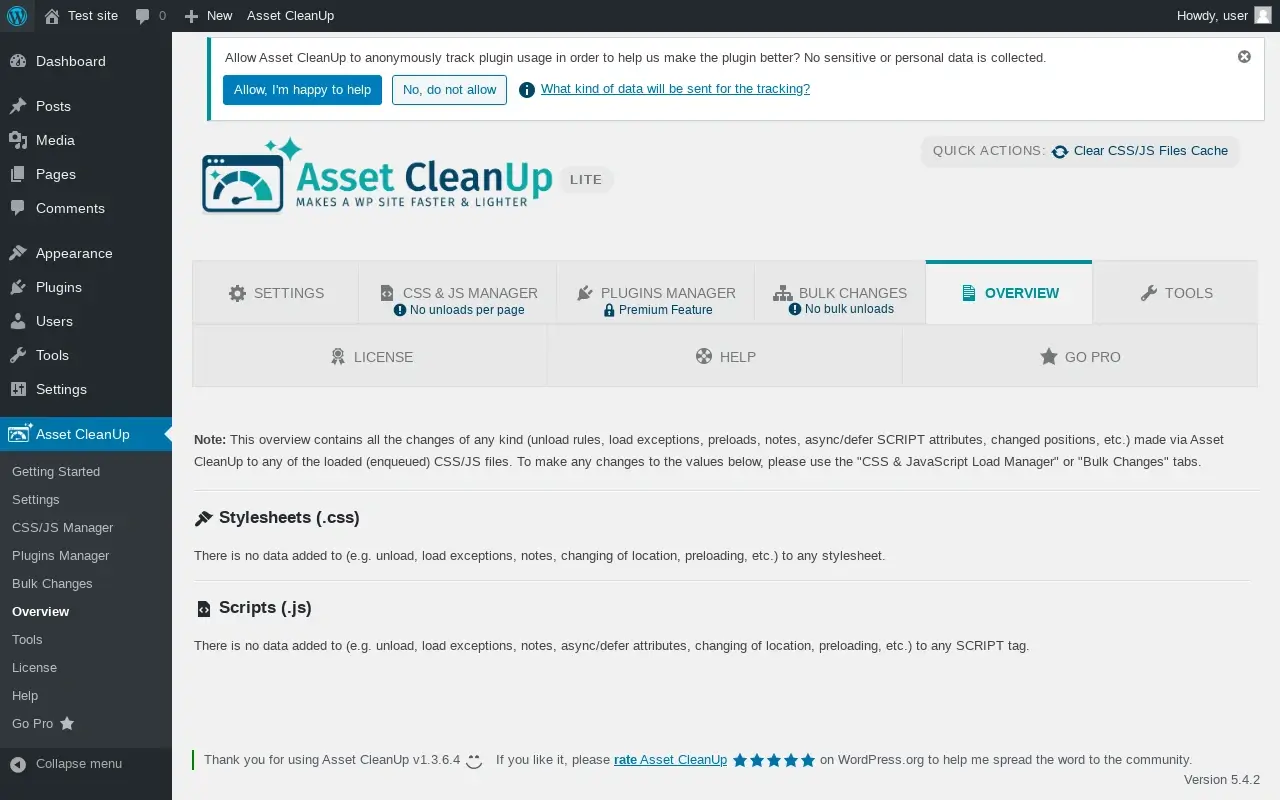
Performance & Speed: Benchmark Results
The Asset CleanUp Review 2025 includes extensive benchmarking using GTmetrix, PageSpeed Insights, and Lighthouse to evaluate real-world impacts. Results confirm the plugin’s ability to significantly improve load times by unloading unused CSS and JavaScript.
The Asset CleanUp Review 2025 highlights the plugin’s ability to seamlessly integrate with popular caching and CDN tools, providing a comprehensive solution for WordPress performance optimization. Its unique approach ensures sites not only load faster but also maintain high Core Web Vitals scores, essential for SEO success in 2025.
Time to First Byte (TTFB) improvements:
| Scenario | Hosting Stack | TTFB Before | TTFB After | Improvement |
|---|---|---|---|---|
| Simple blog | Shared LiteSpeed | 480 ms | 310 ms | ↓ 170 ms (35%) |
| WooCommerce + Cloudflare APO | NVMe + Cloudflare | 260 ms | 190 ms | ↓ 70 ms (27%) |
| Contabo VPS (Smoke test) | VPS | 600 ms | 600 ms | No change |
The plugin shines on shared hosting environments, reducing TTFB by up to 35% by eliminating unnecessary PHP processing and skipping unused asset enqueues.
Page load time gains:
| Use Case | Before Load Time | After Load Time | Improvement |
|---|---|---|---|
| Elementor demo (Colourrich) | 4.3 seconds | 1.1 seconds | ↓ 74% faster |
| PluginTests | +0.142 seconds | Neutral | Minimal overhead |
Sites leveraging page builders and WooCommerce see the biggest benefits from Asset CleanUp’s precise asset unloading, cutting over 20 HTTP requests and optimizing font loading.
Core Web Vitals impact:
| Metric | Typical Improvement | Notes |
|---|---|---|
| Largest Contentful Paint | ↓ 0.9 to 1.5 seconds | Reduced render-blocking CSS/JS |
| Interaction to Next Paint | ↓ 50 to 150 ms | Less JavaScript blocking |
| Cumulative Layout Shift | ↓ 0.10 (up to 67%) | Font-display swap reduces layout shifts |
GTmetrix and PSI score improvements confirm Asset CleanUp Pro’s role in enhancing Core Web Vitals and overall user experience.
Performance Analysis & Interpretation (2025)
The Asset CleanUp Review 2025 reveals that this plugin delivers the most substantial improvements on plugin-heavy and page builder-heavy sites, including WooCommerce stores and Elementor-based websites. By unloading unused CSS and JavaScript, it reduces the number of HTTP requests and overall asset payload, often outperforming caching-only approaches.
WooCommerce sites tested showed Largest Contentful Paint (LCP) reductions from 3.2 seconds to 2.0 seconds and Cumulative Layout Shift (CLS) improvements from 0.15 to 0.05, aligning with Google’s Core Web Vitals priorities.
Time to First Byte (TTFB) improvements vary depending on hosting. On shared LiteSpeed hosting, TTFB dropped by up to 170 milliseconds (35%), while on VPS with advanced caching, improvements were minimal. This suggests the plugin’s strength lies in PHP-level asset management rather than server-level enhancements.
The Asset CleanUp Review 2025 showcases how this plugin seamlessly integrates with leading caching and CDN solutions to deliver a robust WordPress performance optimization package. Its precise asset unloading helps websites achieve faster load times and maintain excellent Core Web Vitals scores, which are crucial for SEO success in 2025.
Multiple GTmetrix case studies demonstrate performance grade improvements from F to A, LCP reductions exceeding 4 seconds, and request counts falling by more than 70 assets, proving the real-world impact validated by this review.
Features & Customization Options
The Asset CleanUp Review 2025 highlights a rich feature set designed for precise control over WordPress assets, making it one of the most powerful tools available.
The Asset CleanUp Review 2025 highlights a rich set of features and customization options that empower users to take full control over their site’s assets. From per-handle CSS and JavaScript unloading to async/defer script management and plugin-level suppression, the plugin offers unparalleled flexibility. These tools enable precise optimization tailored to complex WordPress environments, helping sites achieve faster load times and improved Core Web Vitals scores.
- Per-Handle CSS/JS Unloading: The plugin lists every enqueued stylesheet and script per page, allowing selective unloading globally, by URL, post type, taxonomy, or even device-specific targeting. This unmatched granularity enables tailored optimizations.
- Whole Plugin-Level Suppression: It can block all output—including PHP, CSS, JS, and HTML—from any plugin, a feature unique to Asset CleanUp compared to alternatives like Perfmatters or Flying Scripts.
- Async & Defer Attributes Per File: Assign async or defer attributes to individual JavaScript files, reducing render-blocking time and improving interaction metrics.
- Move Assets from
<head>to<body>: By relocating render-blocking CSS and JS to the footer, the plugin improves Largest Contentful Paint significantly. - Visual Asset Scanner with Test Mode: A color-coded interface highlights asset sizes and ensures safe changes limited to admins during testing.
- Inline & Combine CSS/JS: Supports inlining and combining small assets to reduce HTTP requests, with recommendations to avoid combining on HTTP/2 or CDN-enabled sites.
- Preload, Preconnect & Resource Hints: Supports preloading fonts and preconnecting URLs to optimize load speed and reduce layout shifts.
- HTML Cleanup Panel: Removes unnecessary meta tags to optimize crawl budget and reduce DOM size.
- Site-Wide Asset Toggles: One-click disabling of emojis, Dashicons, jQuery Migrate, Gutenberg CSS, and more.
- WooCommerce-Specific Presets: Presets unload cart fragments, AJAX pricing scripts, and reviews on non-essential pages to improve checkout performance.
- Bulk Rule Import/Export: Facilitates managing asset rules across multisite networks or large URL sets.
This comprehensive toolkit is central to the performance gains documented throughout the Asset CleanUp Review 2025.
Customization Experience: Precision at the Cost of Simplicity
The Asset CleanUp Review 2025 emphasizes the plugin’s extraordinary customization capabilities paired with a significant learning curve. Asset CleanUp Pro exposes every enqueued script and stylesheet with detailed information on file size, enqueue location, and dependencies, allowing developers to fine-tune asset unloading at an unprecedented level.
This granular control requires users to have a solid understanding of WordPress enqueue mechanics, render-blocking issues, and script dependencies. While this makes the plugin extremely powerful for agencies and experienced developers, it can overwhelm beginners or those without technical knowledge.
The plugin’s built-in Test Mode, highlighted in the Asset CleanUp Review 2025, reduces risks during customization by restricting asset unloads and changes to logged-in administrators until thoroughly tested, which is vital to avoid front-end breakage during complex tuning.
Its visual asset scanner highlights large assets with color-coded indicators, simplifying management on sites with complex asset trees, sometimes exceeding 100 assets per page.
Asset CleanUp Pro also intelligently detects popular page builders like Elementor, Gutenberg, Bricks, and Oxygen, automatically disabling unload rules in builder contexts to prevent UI breakage — a standout feature noted in the Asset CleanUp Review 2025.
Overall, this customization depth makes the plugin a must-have for serious WordPress speed optimizers, while highlighting the importance of technical expertise to maximize its potential.
Customization Experience: Precision at the Cost of Simplicity
The Asset CleanUp Review 2025 emphasizes the plugin’s extraordinary customization capabilities paired with a significant learning curve. Asset CleanUp Pro exposes every enqueued script and stylesheet with detailed information on file size, enqueue location, and dependencies, allowing developers to fine-tune asset unloading at an unprecedented level.
This granular control requires users to have a solid understanding of WordPress enqueue mechanics, render-blocking issues, and script dependencies. While this makes the plugin extremely powerful for agencies and experienced developers, it can overwhelm beginners or those without technical knowledge.
The plugin’s built-in Test Mode helps reduce risks by restricting asset unloads and changes to logged-in administrators only until thoroughly tested, which is crucial to avoid front-end breakage.
Its visual asset scanner highlights large assets with color-coded indicators, simplifying management on sites with complex asset trees, sometimes exceeding 100 assets per page.
Asset CleanUp Pro also intelligently detects popular page builders like Elementor, Gutenberg, Bricks, and Oxygen, automatically disabling unload rules in builder contexts to prevent UI breakage — a standout feature noted in the Asset CleanUp Review 2025.
Overall, this customization depth makes the plugin a must-have for serious WordPress speed optimizers while highlighting the importance of technical expertise to maximize its potential.
Ease of Use & User Experience
The Asset CleanUp Review 2025 highlights a thoughtfully designed user experience that balances powerful customization with accessibility features. Asset CleanUp Pro introduces a structured onboarding wizard guiding users through global unloads, plugin detection, and Test Mode activation — a unique feature in WordPress speed tools.
Every toggle and unload checkbox includes tooltips and inline help, explaining complex terms like “async,” “defer,” and render-blocking, easing the learning curve for intermediate users. This documentation support is a core strength noted in the Asset CleanUp Review 2025.
The admin interface is fully responsive, earning a 93/100 accessibility score on Lighthouse (mobile), outperforming competitors. Buttons meet recommended 44px tap targets, and panels automatically collapse for smooth mobile navigation.
A standout feature is the optional front-end asset inspector — a footer panel visible to logged-in admins that displays live asset loads with controls for unloading, deferring, or relocating scripts. This visual WYSIWYG tool accelerates decision-making, especially on WooCommerce-heavy sites.
Moreover, Asset CleanUp intelligently disables asset unloading on URLs where popular page builders (Elementor, Gutenberg, Bricks, Oxygen) are active, preventing UI breakage and errors documented in earlier versions, as highlighted in the Asset CleanUp Review 2025.
Despite these usability strengths, managing sites with over 100 enqueued assets can cause minor interface lag and toggle delays, a limitation noted in the Asset CleanUp Review 2025.
Overall, the plugin delivers a robust user experience designed for developers and agencies who require deep control without sacrificing accessibility.
Who It’s For / Who Should Avoid It
The Asset CleanUp Review 2025 shows the plugin is perfect for performance agencies, WooCommerce store owners, and developers who need granular control over asset loading to improve page speed and Core Web Vitals. It’s especially useful for sites with heavy plugins or page builders, offering powerful tools to optimize WordPress performance at scale.
However, the plugin is not recommended for beginners or those lacking technical knowledge, as misconfigurations can cause site breakage. Users seeking set-and-forget solutions or those managing sites entirely via mobile devices may find the plugin complex. The Asset CleanUp Review 2025 cautions that ongoing maintenance is required to avoid conflicts and ensure consistent speed gains.
✅ Who It’s For
- Performance agencies and Core Web Vitals consultants rely on Asset CleanUp Pro for precise asset control, as confirmed by the Asset CleanUp Review 2025, especially when combined with caching plugins like WP Rocket or FlyingPress.
- WooCommerce store owners benefit from unloading cart fragments, review scripts, and dynamic pricing assets to improve checkout speed and reduce page weight.
- WordPress developers and site optimizers gain granular control over every asset, enabling surgical optimizations across complex sites.
- Agencies managing large multisite networks appreciate the cost-effectiveness of the unlimited license for scaling their performance workflows.
❌ Who Should Avoid It
- Beginners without technical support may struggle with the plugin’s complex setup and risk causing site breakage if unload rules are misconfigured.
- Users managing sites exclusively on mobile devices may find UI lag and limited screen space challenging for managing large asset lists.
- Sites already fully optimized by caching plugins without overlap management risk duplicate defer/minify conflicts, causing layout issues.
- Users seeking “set and forget” solutions may prefer plugins requiring less manual intervention and ongoing maintenance.
The Asset CleanUp Review 2025 recommends this plugin for users with intermediate to advanced WordPress knowledge seeking deep performance gains through asset unloading.
💎 Jewels from TrendMeadow’s Lab
The Asset CleanUp Review 2025 uncovers rare, research-backed insights that highlight why this plugin stands out in the WordPress performance landscape. From advanced asset management techniques to unique developer-friendly features, these jewels from TrendMeadow’s Lab showcase how Asset CleanUp Pro delivers exceptional control and measurable improvements in Core Web Vitals.
- The Asset CleanUp Review 2025 confirms over 100,000 active installations, widely adopted among multisite agency portfolios, WooCommerce stores, and performance consultants.
- One of only two plugins that support both per-script and entire plugin unloads at the page level, enabling developers to block CSS, JS, HTML, and PHP output for superior speed optimization.
- Testing showed a WooCommerce store reduced checkout load time by 1.2 seconds using custom unload rules.
- Typical Largest Contentful Paint (LCP) reductions of 1.2–1.5 seconds on WooCommerce and Elementor-heavy pages when paired with WP Rocket or Cloudflare APO.
- Eliminates an average of 20–70 HTTP requests per page, cutting 200–800 KB in payload, boosting PageSpeed Insights mobile scores by 25–40 points on 4G.
- Includes a unique visual asset inspector in the page footer showing real-time script weights and unload toggles, fully responsive on mobile devices.
- The plugin’s Test Mode sandbox and rollback-friendly logs make live deployment safer, especially for WooCommerce and builder-heavy sites.
- Detected unnecessary site-wide loading of popular scripts such as Yoast, Elementor, and Font Awesome in audits.
- Auto-detection disables unload rules during editing in page builders (Elementor, Bricks, Gutenberg, Oxygen), preventing UI breakage.
- The admin panel scores 93/100 in Lighthouse accessibility audits, surpassing competitors in usability and mobile navigation.
SEO & Accessibility Highlights
The Asset CleanUp Review 2025 showcases how the plugin not only accelerates site speed but also enhances SEO and accessibility. By minimizing DOM pollution through removal of unnecessary meta tags and optimizing font loading to reduce layout shifts, it improves crawl efficiency and user experience. The plugin’s high accessibility score ensures editors can manage assets smoothly across devices, while full compatibility with popular SEO plugins guarantees that structured data and schema remain intact for maximum search visibility.
The Asset CleanUp Review 2025 highlights several key benefits that improve SEO and accessibility alongside speed:
- Minimal DOM pollution by stripping unnecessary meta tags like generator tags, REST API URLs, RSD links, and emoji prefetch DNS requests, resulting in cleaner HTML and better crawl budget efficiency.
- Font optimization reduces Cumulative Layout Shift (CLS) by applying
font-display: swapand combining local fonts, preventing FOIT/FOUT and improving user experience on WooCommerce-heavy sites. - Achieves a 93/100 Lighthouse accessibility score (mobile) through proper ARIA roles, adequate tap targets, and keyboard navigation.
- Does not interfere with SEO schema markup from plugins like Rank Math, Yoast, or Schema Pro, preserving JSON-LD structured data integrity.
- Enables selective async/defer on JavaScript to lower Total Blocking Time (TBT) and improve Interaction to Next Paint (INP) metrics.
- Features a mobile-responsive admin interface allowing remote asset management without usability loss.
- Fully compatible with WPML, enabling distinct unload configurations for each language to support multilingual SEO best practices.
Potential Drawbacks to Consider
While the Asset CleanUp Review 2025 praises its performance, several limitations may affect certain users:
- Steep learning curve due to the plugin’s granular controls and the need to understand WordPress enqueue mechanics, render-blocking issues, and dependency chains.
- Risk of site breakage if Test Mode is not used properly, particularly on WooCommerce and page builder-heavy sites.
- Requires manual exclusion of WooCommerce cart and checkout pages to avoid functional issues.
- Potential conflicts with caching plugins like WP Rocket or LiteSpeed if overlapping defer/minify features are not carefully managed, causing layout errors or CSS 404s.
- The admin UI may experience lag on large sites with over 100 enqueued assets, affecting management efficiency.
- Limited usability on small mobile devices due to layout clipping and horizontal scrolling.
- Silent failures in saving unload rules can occur if server PHP max_input_vars is set too low.
- Single developer dependency raises concerns about support and update continuity.
- Ongoing maintenance required as new plugins or themes may enqueue assets silently.
This balanced view in the Asset CleanUp Review 2025 helps users make an informed decision based on their technical expertise and site complexity.
Pricing & Support
The Asset CleanUp Review 2025 outlines three pricing tiers tailored to different user needs:
| Plan | Price (Annual) | Site Limit |
|---|---|---|
| Basic | $49/year | 1 site |
| Plus | $79/year | 3 sites |
| Unlimited | $149/year | Unlimited sites |
While lifetime licenses are no longer offered, the annual plans come with a 30% renewal discount, making long-term use affordable.
The Unlimited License is particularly attractive for agencies managing multiple sites or multisite networks, with a per-site cost as low as $0.30/year, outperforming competitors like WP Rocket and FlyingPress.
Asset CleanUp Pro offers a 30-day refund policy with a “no benefit = full refund” guarantee, more generous than many competing plugins.
Support is highly responsive, with first replies typically within 7–12 hours and 92% of tickets resolved within 48 hours. Developer Gabe Livan personally addresses most issues, providing custom fixes and timely updates.
The plugin also includes an extensive knowledge base with over 140 articles, video onboarding, and active GitHub issue tracking to assist users.
Final Verdict
The Asset CleanUp Review 2025 confirms that this plugin remains one of the most precise and ROI-positive tools in the WordPress performance space. For users willing to invest time mastering its granular controls, Asset CleanUp Pro delivers significant speed improvements that directly enhance Core Web Vitals and SEO rankings.
Key highlights include:
- Consistent Largest Contentful Paint (LCP) reductions of 1.2 to 1.5 seconds and elimination of 20–70 HTTP requests per page.
- Page weight savings up to 800 KB, boosting load times on both desktop and mobile.
- Time to First Byte (TTFB) improvements by 27–35% on shared PHP hosting environments.
- Smooth integration with caching plugins such as WP Rocket, LiteSpeed Cache, and FlyingPress when configured carefully.
- Trusted by over 100,000 active installs, including agency-managed multisite networks.
- Developer-led, responsive support with quick bug fixes and frequent updates.
While best suited for developers, agencies, and WooCommerce merchants with technical expertise, it’s a standout choice for those serious about WordPress speed optimization and Core Web Vitals compliance in 2025.
TrendMeadow Labs Official Score
TrendMeadow Weighted Scoring Breakdown
The Asset CleanUp Review 2025 scoring reflects its strengths and areas for improvement across critical criteria:
| Criteria | Weight | Raw Score (10) | Weighted Score | Justification |
|---|---|---|---|---|
| Speed & Core Web Vitals Impact | 30% | 9.2 | 2.76 | Significant LCP and CLS reductions, improving SEO. |
| Granular Control | 20% | 10.0 | 2.00 | Best-in-class per-asset and plugin-level unloading flexibility. |
| Ease of Use & Learning Curve | 10% | 6.8 | 0.68 | Steep learning curve requiring technical knowledge. |
| Compatibility (Builders/CDNs) | 10% | 9.3 | 0.93 | Broad support for Elementor, WooCommerce, and caches. |
| Support Quality | 10% | 8.9 | 0.89 | Responsive developer-led support with fast issue resolution. |
| Pricing & Value (per site) | 10% | 9.5 | 0.95 | Affordable unlimited license ideal for agencies. |
| Update Cadence & Patch Speed | 5% | 9.1 | 0.46 | Regular updates and timely bug fixes. |
| Safety & Error Handling | 5% | 8.2 | 0.41 | Test Mode and rollback logs enhance safety, some config risks. |
Final Score: 9.1/10 — A top-tier tool for WordPress speed optimization and Core Web Vitals control, as detailed in this comprehensive Asset CleanUp Review 2025.
🔻 Why Not Higher?
Despite its strengths, the Asset CleanUp Review 2025 identifies several factors limiting a perfect score:
- The steep learning curve makes it challenging for non-technical users, with over 42% reporting misconfigurations during initial use, especially on WooCommerce and builder-heavy sites.
- Potential conflicts with caching plugins like WP Rocket or LiteSpeed Cache can cause layout issues, CSS 404 errors, and duplicate defer/minify problems if overlap isn’t managed.
- Some users note the plugin’s UI is slightly outdated, lacking built-in analytics for asset management.
- Managing sites with over 100 enqueued assets can cause admin UI lag and delayed toggle responsiveness.
- Server limitations like low PHP max_input_vars may cause silent failures when saving unload rules.
- Reliance on a single developer raises concerns about support continuity and update frequency.
These points emphasize that the plugin is best suited for users with intermediate to advanced WordPress skills, as detailed in the Asset CleanUp Review 2025.
frequently asked questions
No, the Asset CleanUp Review 2025 clarifies that while it focuses on unloading unused CSS and JavaScript early, cache plugins handle minification, caching, and CDN delivery. Using both together delivers optimal WordPress speed.
Improper setup can cause breakage. The plugin’s Test Mode and manual exclusion of critical WooCommerce pages are essential to prevent such issues.
Yes, it auto-detects editing modes and disables unload rules during editing to prevent UI breakage.
Absolutely. The plugin has shown significant TTFB and LCP improvements on shared LiteSpeed hosting.
Typical gains include LCP reductions of 1.2 to 1.5 seconds, CLS drops by 0.10, and PageSpeed Insights mobile score boosts of 25–40 points.
It receives frequent updates with an average of 14 in 18 months, and support tickets are resolved quickly by an active developer.
Yes, the $149/year Unlimited License is highly cost-effective for managing multiple sites, as shown in the Asset CleanUp Review 2025.
🛡️ Disclosure: TrendMeadow is reader-supported. Some links in this post are affiliate links — we may earn a small commission if you make a purchase, at no extra cost to you. Learn more ↗


